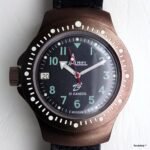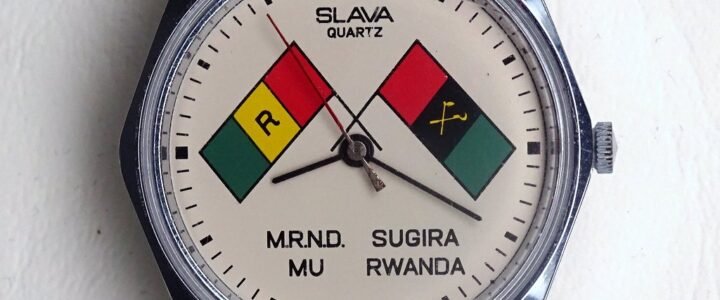Introduction
The SLAVA watch with the inscription “M.R.N.D. SUGIRA MU RWANDA” is a historical artifact that offers a glimpse into political propaganda in Rwanda before the 1994 genocide. This article explores the details of this watch, the meaning of its inscriptions and flags, and the historical context in which it was used.
Description of the Watch
The watch features a dial with two colorful flags and the inscription “M.R.N.D. SUGIRA MU RWANDA.” It is powered by a Soviet-made Slava 2356 quartz movement, known for its affordability and reliability. The “Made in USSR” mark indicates that the watch was produced before the end of 1991, the year the Soviet Union dissolved.
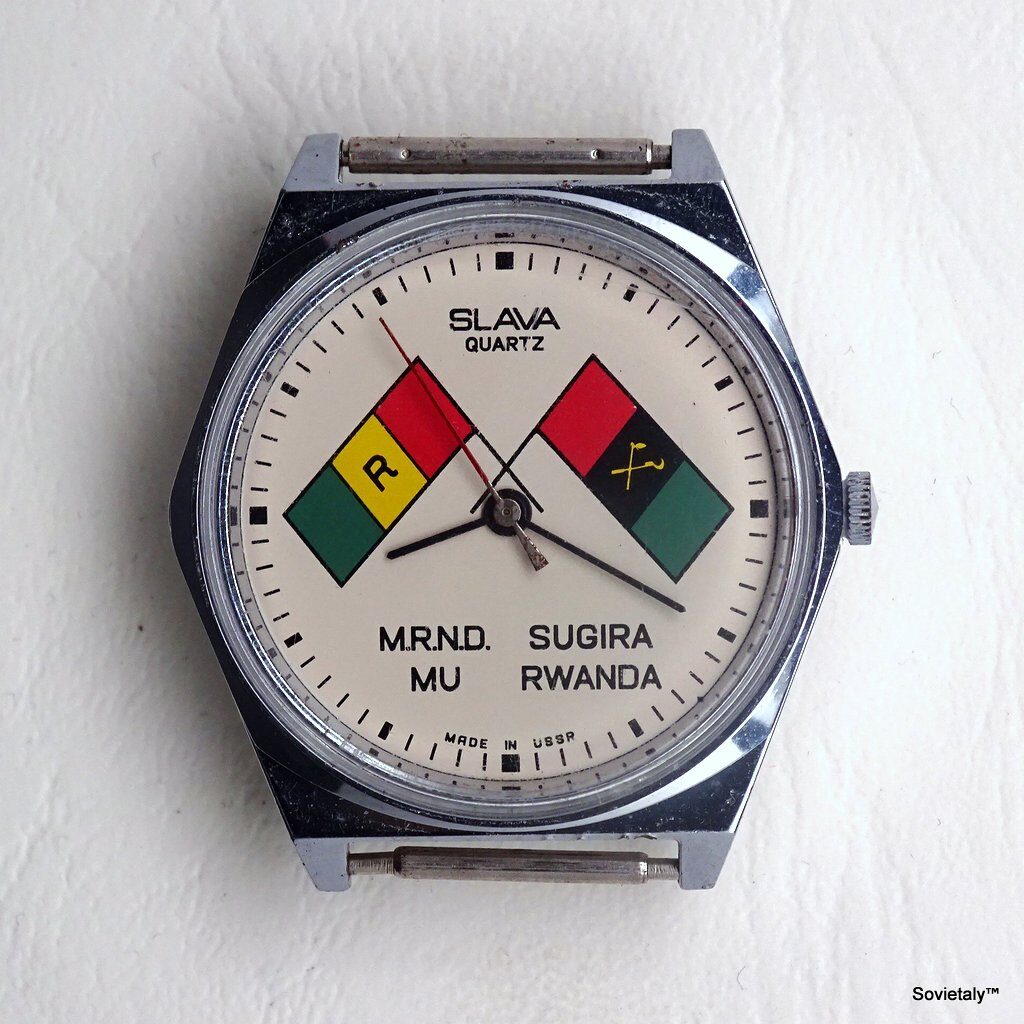
The Flags
- Left Flag (with the letter “R”):
- Colors: Red, yellow, and green.
- Symbol: The letter “R” in yellow.
- Meaning: This flag was the national flag of Rwanda used from 1962 to 2001. These colors are common in Pan-African movements and symbolize national identity and Hutu nationalism. The “R” stands for “Rwanda” (Wikiwand).
- Right Flag (MRND):
- Colors: Red, black, and green.
- Symbol: A sickle with a long handle and a hoe.
- Meaning: This flag represents the MRND party (Mouvement Révolutionnaire National pour le Développement). The agricultural tools symbolize labor and are consistent with the party’s focus on agricultural and national development (Wikiwand) (Wikiwand).
The Inscription “M.R.N.D. SUGIRA MU RWANDA”
The inscription on the dial, “M.R.N.D. SUGIRA MU RWANDA,” is in Kinyarwanda. Here is a detailed explanation:
- M.R.N.D: Abbreviation for “Mouvement Révolutionnaire National pour le Développement”.
- SUGIRA: In Kinyarwanda, it means “prosper” or “flourish”.
- MU RWANDA: Means “in Rwanda”.
The complete phrase can be translated as “The MRND prospers in Rwanda.” This slogan represents the party’s propaganda, emphasizing its dominance and influence in the country.
Propaganda Use of the Watch
The watch served as a propaganda tool for the MRND. Distributed to supporters and party members, it symbolized the MRND’s authority and pervasive presence in the daily lives of Rwandans. The “Made in USSR” mark suggests that the watch was produced before the end of 1991, probably because the Soviet Union was one of the few countries capable of mass-producing affordable watches at that time (NSUWorks) (Human Rights Watch).

The 1994 Genocide: A Detached Overview
The Rwandan genocide of 1994 was one of the most tragic events in recent history. In about 100 days, from April to July 1994, between 500,000 and 1,000,000 people were massacred, predominantly Tutsis, but also moderate Hutus.
Causes and Context
Ethnic tensions between Hutus and Tutsis had been present for decades, exacerbated by Belgian colonial policies. After independence in 1962, these tensions intensified, culminating in the assassination of Hutu President Juvénal Habyarimana on April 6, 1994, which triggered the genocidal violence (Wikis at NYU).
Course of the Genocide
Immediately after Habyarimana’s assassination, Hutu militias, including the Interahamwe, began systematically killing Tutsis and moderate Hutus. The violence quickly spread from Kigali to the rest of the country, with atrocities committed in schools, churches, and private homes (Human Rights Watch) (Wikis at NYU).
International Response
The international community was criticized for its inaction. UN peacekeeping forces were reduced after the killing of 10 Belgian soldiers, leaving the field open to the genocidaires. It was not until mid-May 1994 that the UN authorized the deployment of additional troops, but it was too late (Human Rights Watch) (Wikis at NYU).
Aftermath and Recovery
The genocide ended with the victory of the Tutsi-led Rwandan Patriotic Front (RPF). The new government promoted reconciliation and adopted a new constitution that eliminated ethnic references, striving to rebuild a devastated country (Wikis at NYU).
Conclusion
The MRND watch, with its flags and slogans, represents a tangible symbol of a dark period in Rwanda’s history. It serves as a reminder of the propaganda used by the MRND to consolidate its power and the horrific genocide that followed. As Rwanda continues to heal and rebuild, these objects remind us of the importance of vigilance against ethnic hatred and violence.
Sources
- Britannica: Rwanda Genocide of 1994
- Wikipedia: Rwandan Genocide
- History: Rwandan Genocide
- United States Holocaust Memorial Museum: Rwanda
- Wikiwand: Interahamwe
- NSUWorks: Words and Power in Conflict: Rwanda Under MRND Rule
- HRW Report: Leave None to Tell the Story: Genocide in Rwanda
- Raketa Big Zero: The Story Behind One of the Most Iconic Watches
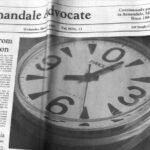
- CCCP Sputnik 1 – A Watch That Celebrates the Space Age

- How to Remove Scratches from the Plexiglass of Your Watch: Complete Guide
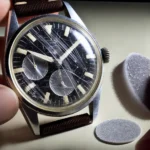
- Complete Guide to Modern Russian Watchmaking
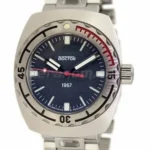
- Soviet CCCP Watch: The History of SOVIET Watches from the ’90s
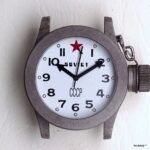
- Russian Military Watches: A Comprehensive Guide
